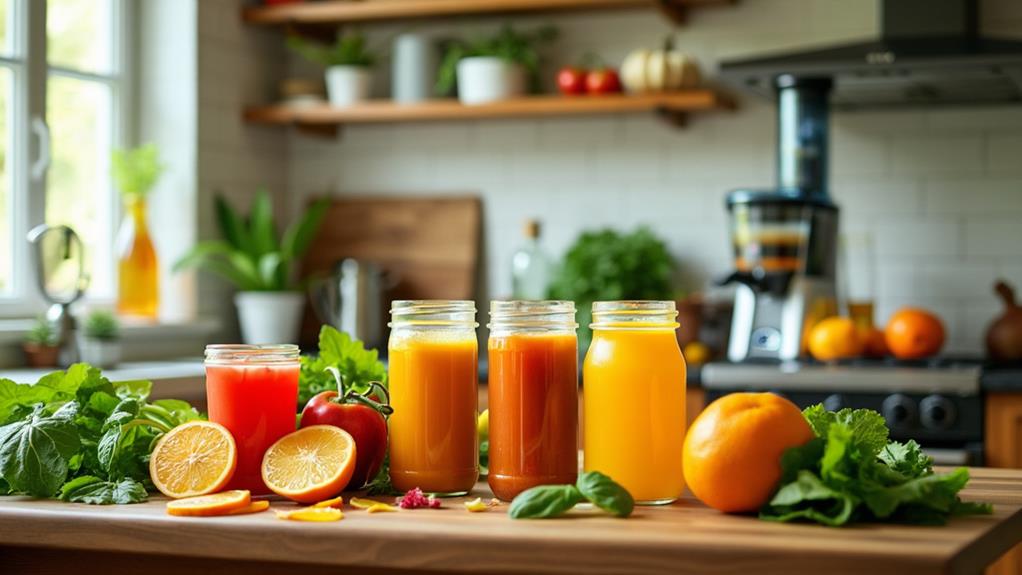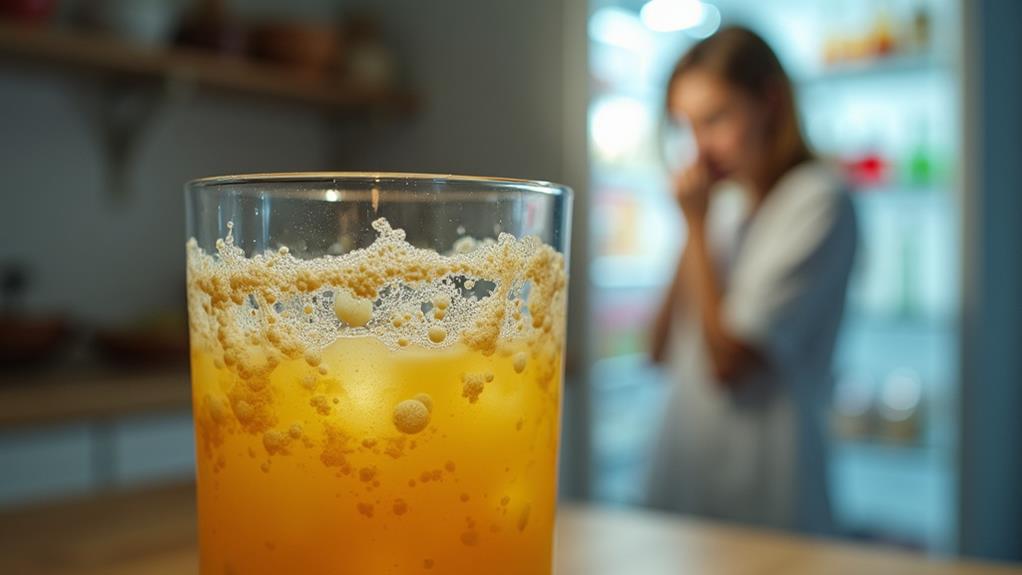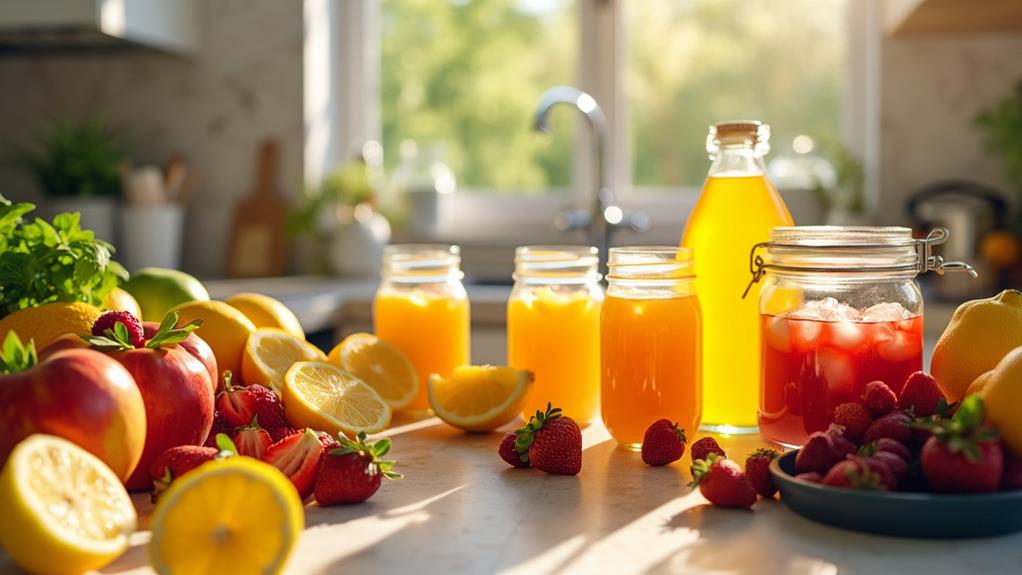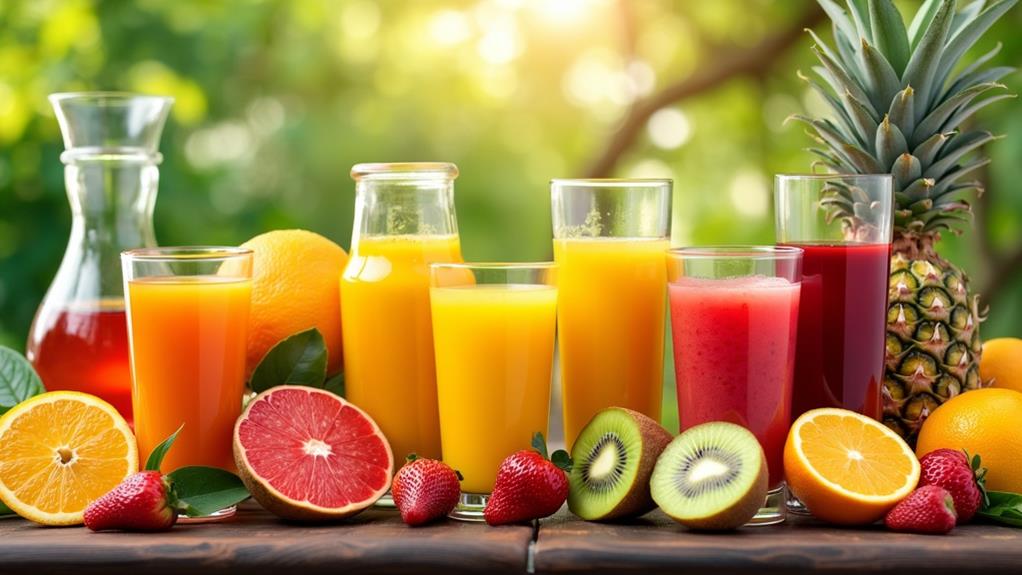Understanding Juice Expiry Dates: How to Check and What to Know
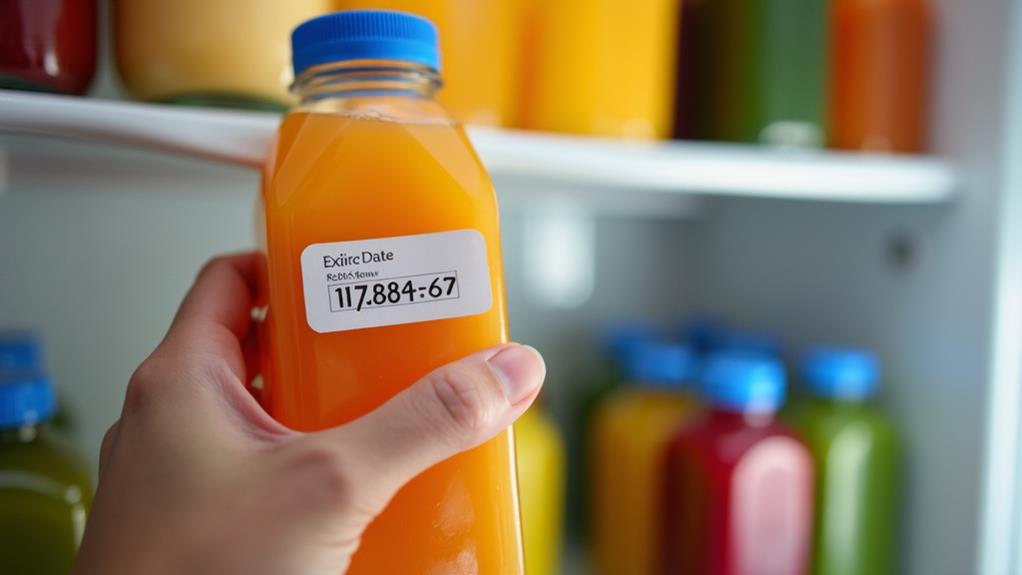
When you buy juice, it's crucial to check the expiry date to ensure you're consuming a safe and fresh product. Terms like "Best Before," "Use By," and "Consume By" might seem similar, but they have distinct meanings that affect both health and taste. Additionally, consider storage conditions and whether the juice is pasteurized or unpasteurized, as these factors significantly influence its shelf life. Wondering how to interpret these labels correctly or identify signs of spoilage? Let's explore what you need to know.
Types of Juice Expiry Dates
When buying juice, understanding the different types of expiry dates can help you make informed choices and reduce waste. Expiration dates on juice packaging indicate various aspects of the product's longevity. The "best before" date indicates when the juice will be at its peak quality. Consuming juice after this date may not be harmful, but you might notice a decline in taste or nutritional value.
The "use by" date marks the last day the juice is expected to be at peak freshness. This is often found on unpasteurized juices, which have a shorter shelf life due to a higher risk of bacterial growth. If you see a "consume by" date, adhere strictly to it to avoid potential health risks.
Pasteurized juices can have a much longer shelf life. Unopened containers can maintain their quality for up to 12 months when stored correctly. However, once opened, they should be consumed within a week. Cold-pressed juices, which lack preservatives, should be consumed within a few days to ensure safety and freshness.
Understanding these dates helps you enjoy your juice at its best quality.
Factors Affecting Juice Shelf Life
Understanding the factors affecting juice shelf life can help you make informed choices and minimize waste. One key factor is the pasteurization method. Pasteurized juices generally have a longer shelf life because the process eliminates harmful microorganisms, whereas unpasteurized juices can ferment and spoil quickly.
Acidity also significantly impacts shelf life. Juices like orange, grape, and tomato have a longer shelf life due to their low pH, which inhibits bacterial growth. These juices can often remain safe for consumption beyond their expiration dates if stored properly.
Proper storage conditions are essential for extending juice shelf life. Refrigeration and protection from light can slow down the degradation of quality and flavor. Unopened juice can last up to 12 months when kept in a cool, dark place.
Preservatives play a role in enhancing shelf stability by maintaining flavor and quality, allowing juice to stay safe for consumption for extended periods.
Lastly, always check for signs of spoilage, such as off smells or unusual textures. While expired juices might still be safe, consuming spoiled juice can lead to stomach discomfort and illness. Proper storage and understanding these factors can help you enjoy juice longer and reduce waste.
How to Read Expiry Dates
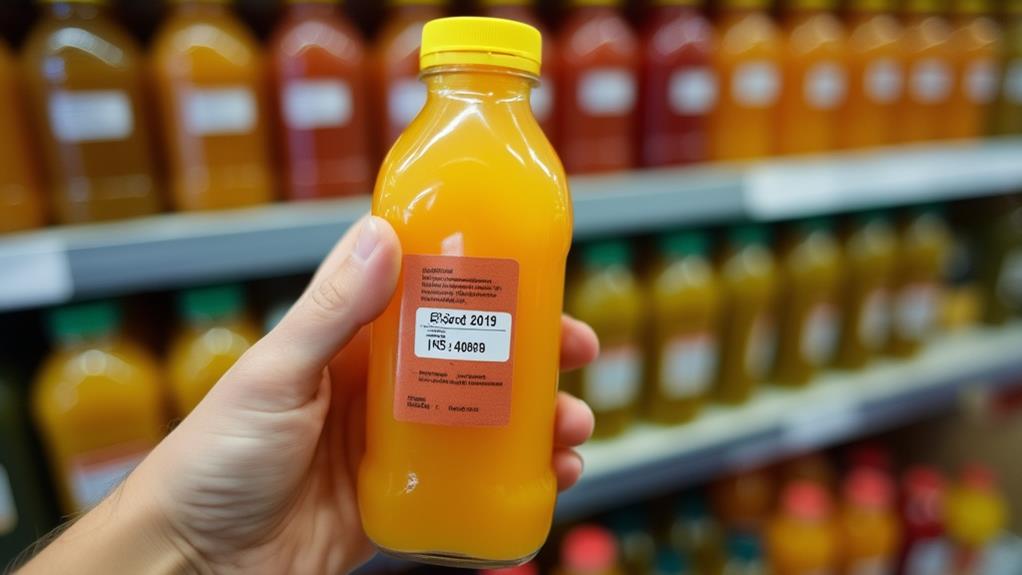
When reading expiry dates on juice, you'll encounter different formats such as DD/MM/YYYY or MM/DD/YYYY. It's important to know the common formats in your area to avoid confusion. Additionally, recognizing supplementary codes like Julian dates can provide more insight into the juice's freshness. Remember, the "best before" date indicates quality, while the "use-by" date is about safety. Knowing the difference is crucial for making informed choices.
Common Date Formats
Ever wondered why juice expiry dates can be so confusing? The answer often lies in the diverse date formats used around the world. When checking expiration dates, you might encounter formats like DD/MM/YYYY, MM/DD/YYYY, or YYYY/MM/DD. This can be particularly tricky if you're not familiar with these styles.
In the United States, the MM/DD/YYYY format is common. So, a juice marked "03/12/2023" would mean March 12, 2023. However, in the UK and many European countries, the DD/MM/YYYY format is typically used, which would mean December 3, 2023, for the same date. This difference can easily lead to misunderstandings if you're not aware of it.
Additionally, some products use a two-digit year format, like "03/12/23," which could mean different things depending on the context. The complexity increases with non-Gregorian formats, especially in countries like Japan, where dates can be written entirely differently.
To avoid any confusion, always check the location of the manufacturer. This will give you a clue about the date format used. Understanding these common date formats can help ensure you're consuming your juice before its best-before date expires.
Regional Differences Explained
Understanding the variety of date formats used globally can help you avoid confusion when reading juice expiry dates. Different countries employ distinct formats, which can lead to misinterpretation if you are not familiar with the local conventions.
For example:
- UK: Uses the DD/MM/YYYY format.
- US: Uses the MM/DD/YYYY format.
- Japan: Utilizes a two-digit year format based on a non-Gregorian calendar.
- Canada: Features multiple date formats on product labels, adding to the potential confusion.
To navigate these differences, always check the expiry dates carefully and verify the format used in the region where the product is sold. The Department of Agriculture in each country typically provides guidelines on how dates should be printed, aiding you in decoding them correctly. Being aware of these regional variations helps ensure you make informed decisions and avoid purchasing expired juice.
Tips for Consumers
Navigating expiry dates on juice products can help you avoid consuming spoiled beverages. First, familiarize yourself with common date formats like MM/DD/YYYY or DD/MM/YYYY to ensure accurate reading of the labels.
Understanding the difference between "best before" and "use by" dates is crucial. "Best before" indicates the period during which the juice maintains optimal quality. While you can consume it after this date, it may not taste as fresh. In contrast, the "use by" date is a strict safety guideline—do not consume the juice past this date to avoid health risks.
Unopened juice can last up to 12 months if stored properly. However, always inspect juice for signs of spoilage before drinking, even if it's within the expiration date. Look for changes in color, smell, or texture.
Cold pasteurized juices, which undergo high-pressure processing, often have longer shelf lives. For best long-term storage options, look for these labels. Be cautious with unpasteurized juice, as it may ferment after its expiration date, especially if it's not acidic like orange or grape juice.
Signs of Spoiled Juice
To identify spoiled juice, pay attention to changes in appearance, smell, and texture.
- Color Change: Fresh juice usually has a clear, vibrant look. Spoiled juice may appear darker or cloudy, signaling fermentation or decomposition.
- Off Smell: A sour or unusual odor suggests bacterial or yeast growth, indicating the juice is past its prime.
- Bubbles or Fizz: If your juice was meant to be still but you notice bubbles or fizz, this indicates unwanted fermentation and the juice is unsafe to drink.
- Texture Changes: Separation or sediment at the bottom of the container, especially if paired with an off smell or taste, are signs of spoilage.
Proper Juice Storage Tips
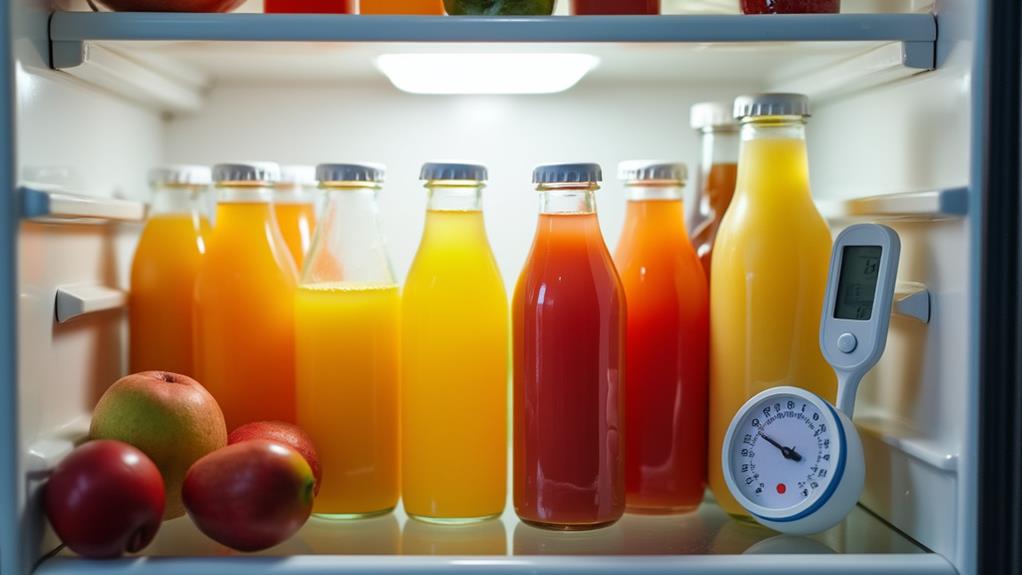
Properly storing juice can significantly extend its freshness and reduce waste. For unopened juice, keep it in a cool, dark place to maintain its quality and prevent spoilage, allowing it to last up to 12 months if stored correctly. Once opened, refrigerate the juice immediately and consume it within 7 to 10 days to minimize the risk of spoilage and bacterial growth.
Avoid temperature fluctuations to retain the juice's flavor and freshness, as warmer conditions accelerate oxidation. Always check for off smells, flavors, or visible signs of spoilage, even if the juice is within its expiration date, to ensure it is safe to consume.
For homemade or fresh-pressed juices, use airtight containers to reduce exposure to oxygen, which can quickly degrade both flavor and quality. Following these juice storage tips will help you enjoy your juice at its best.
Importance of Pasteurization
Pasteurization is crucial for ensuring the safety and longevity of juice. This heat treatment process eliminates harmful microorganisms, making juice safer to drink and extending its shelf life. Without pasteurization, juice can harbor bacteria and pathogens that cause foodborne illnesses.
There are three main methods for pasteurizing juice:
- Tunnel pasteurization: Suitable for large-scale production.
- Batch pasteurization: Applied to smaller quantities.
- Cold pasteurization techniques: Methods like high-pressure processing that preserve juice quality while eliminating pathogens without using heat.
The FDA regulates these processes and mandates proper labeling to ensure manufacturers meet safety standards. This regulation enables consumers to make informed choices and trust that their juice is safe to consume. Regular testing of pasteurized juices confirms the absence of harmful bacteria, ensuring products remain safe and of high quality over time.
Understanding pasteurization is essential when considering expiration dates. Properly pasteurized juices not only last longer but also retain their fresh taste and nutritional value. By considering these factors, you can enjoy juice with confidence, knowing it is free from harmful microorganisms.

